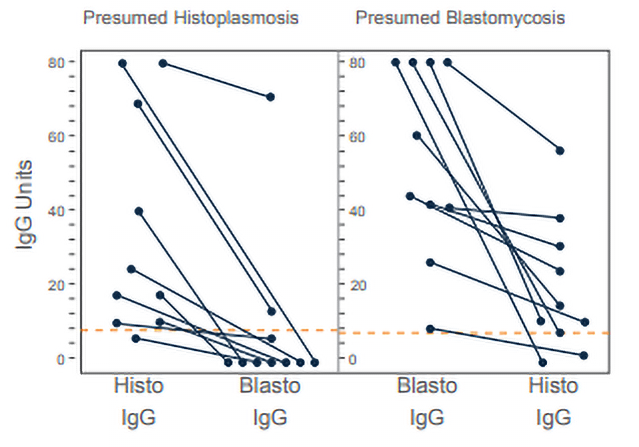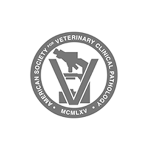What Is the Role of Antibody Testing for Diagnosing Histoplasmosis and Blastomycosis?
Diagnosis
Antigen detection is the most common method for diagnosing histoplasmosis and blastomycosis in veterinary medicine. However, results may be falsely negative in 5-10% of cases. While testing both urine and serum for antigen improves sensitivity, both may be negative in some cases. Antibody detection is a common method for diagnosing histoplasmosis in humans [1
| Table | Antibody positive N=146 |
Antibody negative N=372 |
|---|---|---|
| Antigen positive N=138 |
100 (19.3%) | 38 (7.3%) |
| Antigen negative N= 380 |
46 (8.9%) | 334 (64.5%) |
Results
Histoplasma and Blastomyces antigen and IgG antibody test results in 518 dogs performed at MiraVista between 2017 and February 2020 (Table) were reviewed. Antigen or antibody was detected in 184/518 (35.5%) of all dogs tested. Of those with ≥1 positive result, 46/184 (25%) were antibody positive, but antigen negative. These represent potentially positive cases that would have been missed if antibody testing was not performed.
Figure. Comparison of Histoplasma and Blastomyces IgG antibody levels measured in the same dogs.
Conclusion
- The antigen detected in histoplasmosis and blastomycosis is completely cross reactive. Testing for both is unnecessary.
- The antibody response is relatively specific. Test for both because there is overlap of the clinical findings and geographic distribution.
- Antibody testing for both provided the most sensitive method for diagnosing cases with negative antigen results.
- When both Histoplasma and Blastomyces IgG antibodies are detected, the correct diagnosis can be inferred by the higher IgG concentration.
- Further studies are needed with additional clinical information including results of other diagnostic tests such as, pathology and molecular methods.
We Recommend
- Send both urine and serum.
- Test urine for antigen based on what’s more common in your area.
- If the urine antigen test is negative and both mycoses are common in your area test the serum for Histoplasma antigen, Histoplasma IgG antibodies, Histoplasma FID antibodies, and Blastomyces IgG antibodies to avoid missing the diagnosis in about 15% of cases. In cats, test the serum for Blastomyces FID antibodies as a test for feline Blastomyces IgG antibodies is unavailable.
REFERENCES:
- Richer SM, Smedema ML, Durkin MM, et al. Improved Diagnosis of Acute Pulmonary Histoplasmosis by Combining Antigen and Antibody Detection. Clin Infect Dis 2016 Apr 1; 62(7):896-902.
- Mourning AC, Patterson EE, Kirsch EJ, et al. Evaluation of an enzyme immunoassay for antibodies to a recombinant Blastomyces adhesin-1 repeat antigen as an aid in the diagnosis of blastmycosis in dogs. J Am Vet Med Assoc 2015 Nov 15; 247(10):1133-8.









